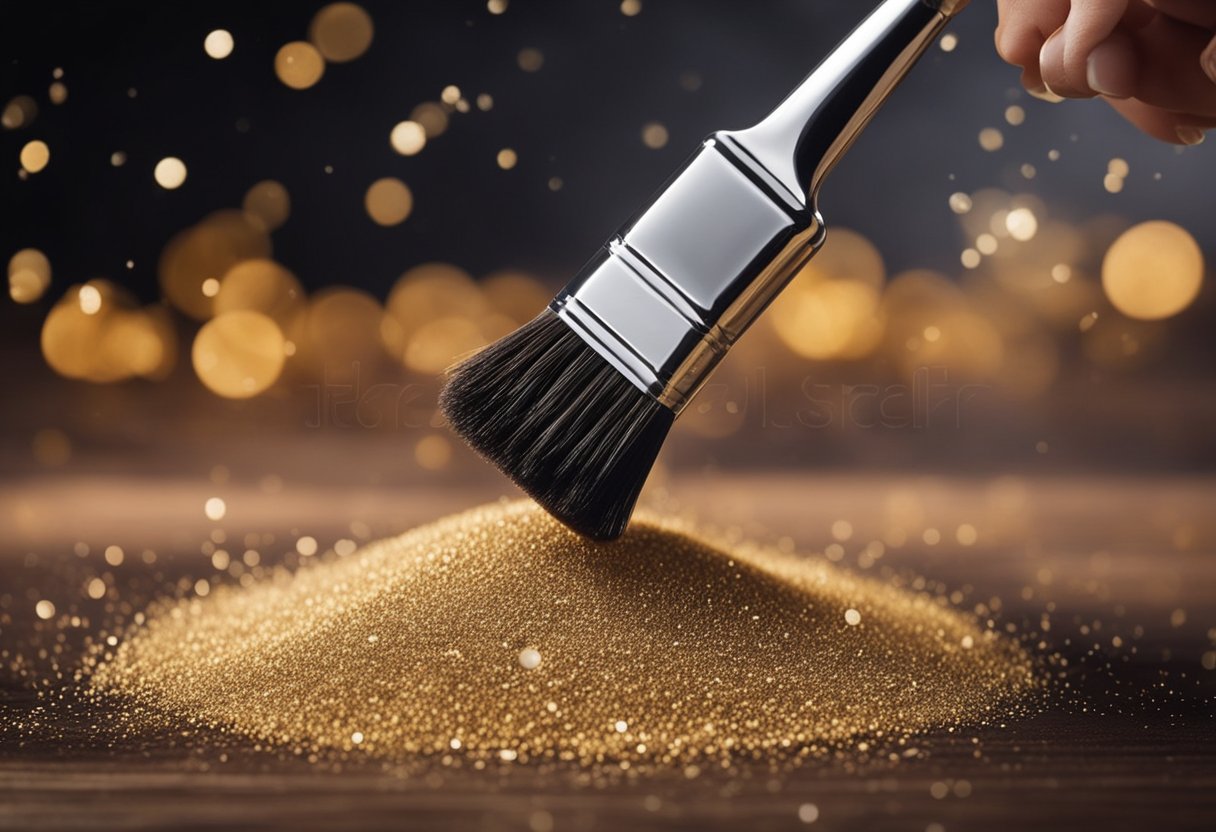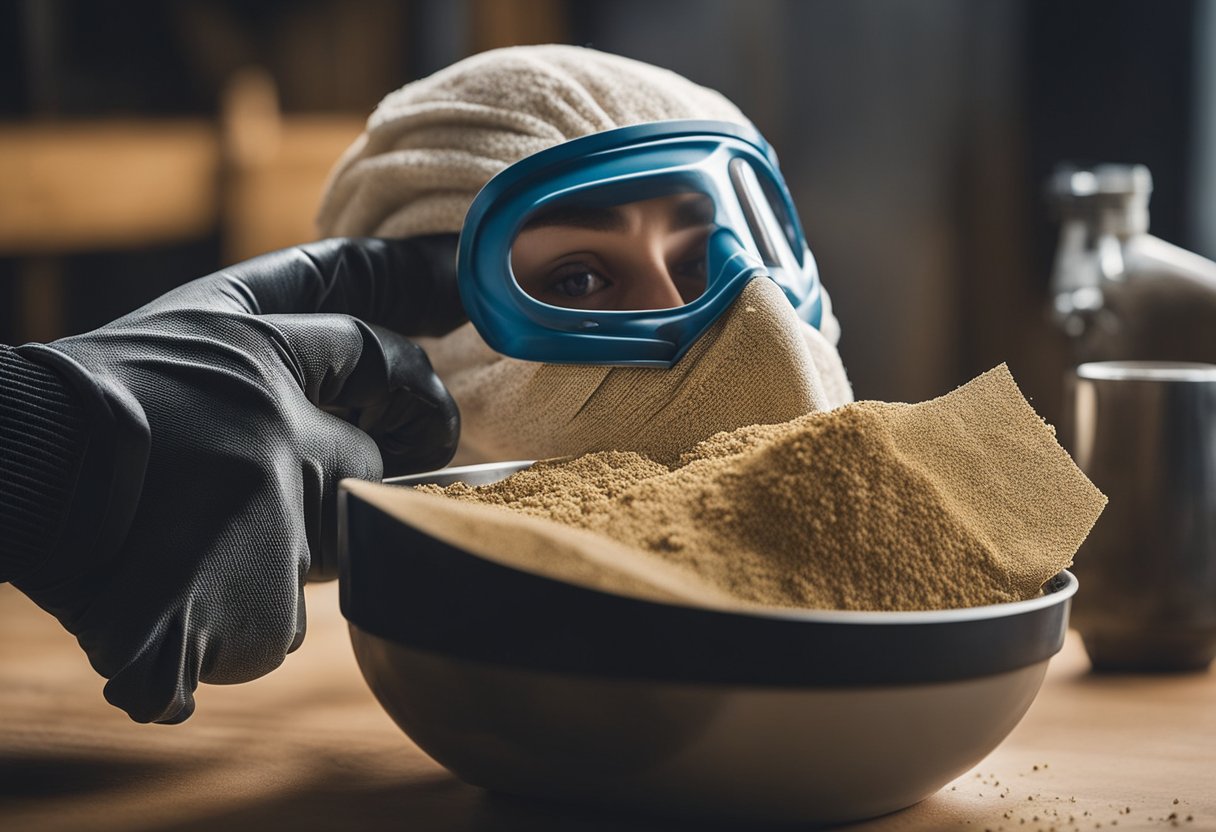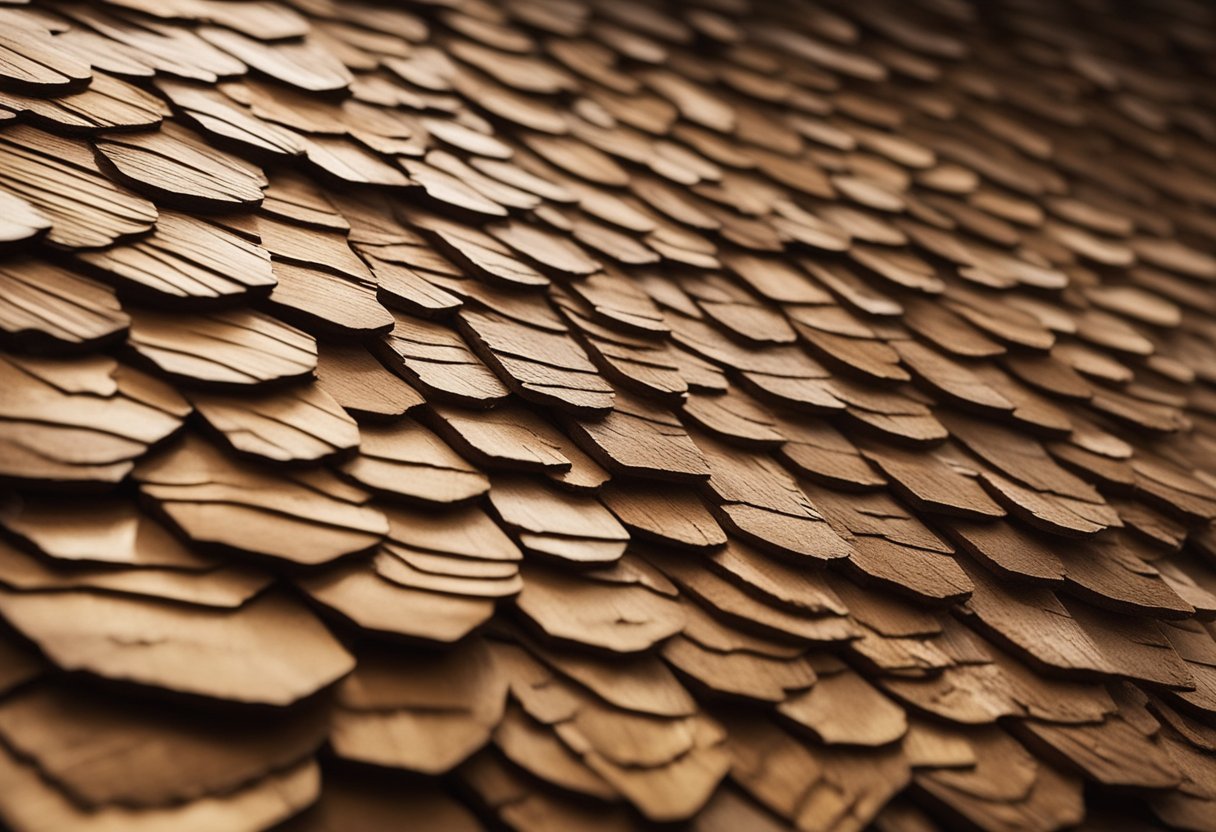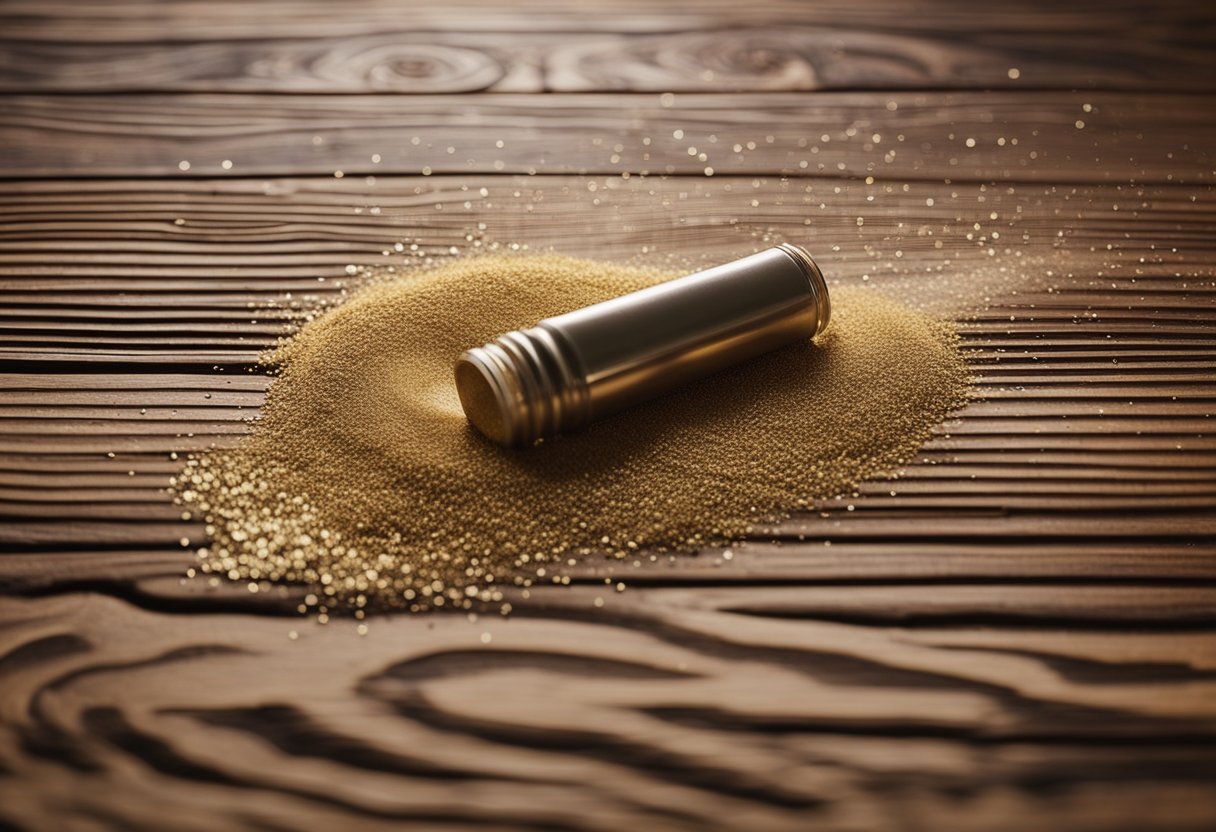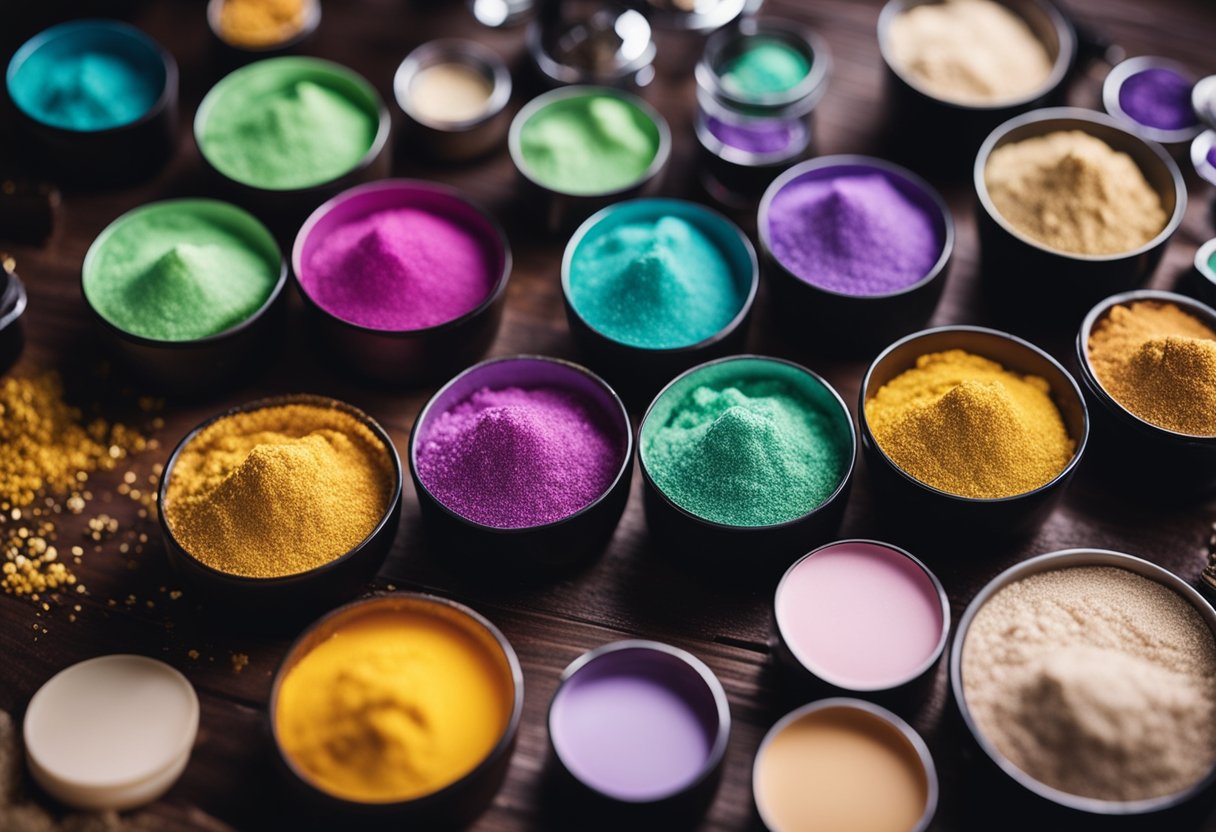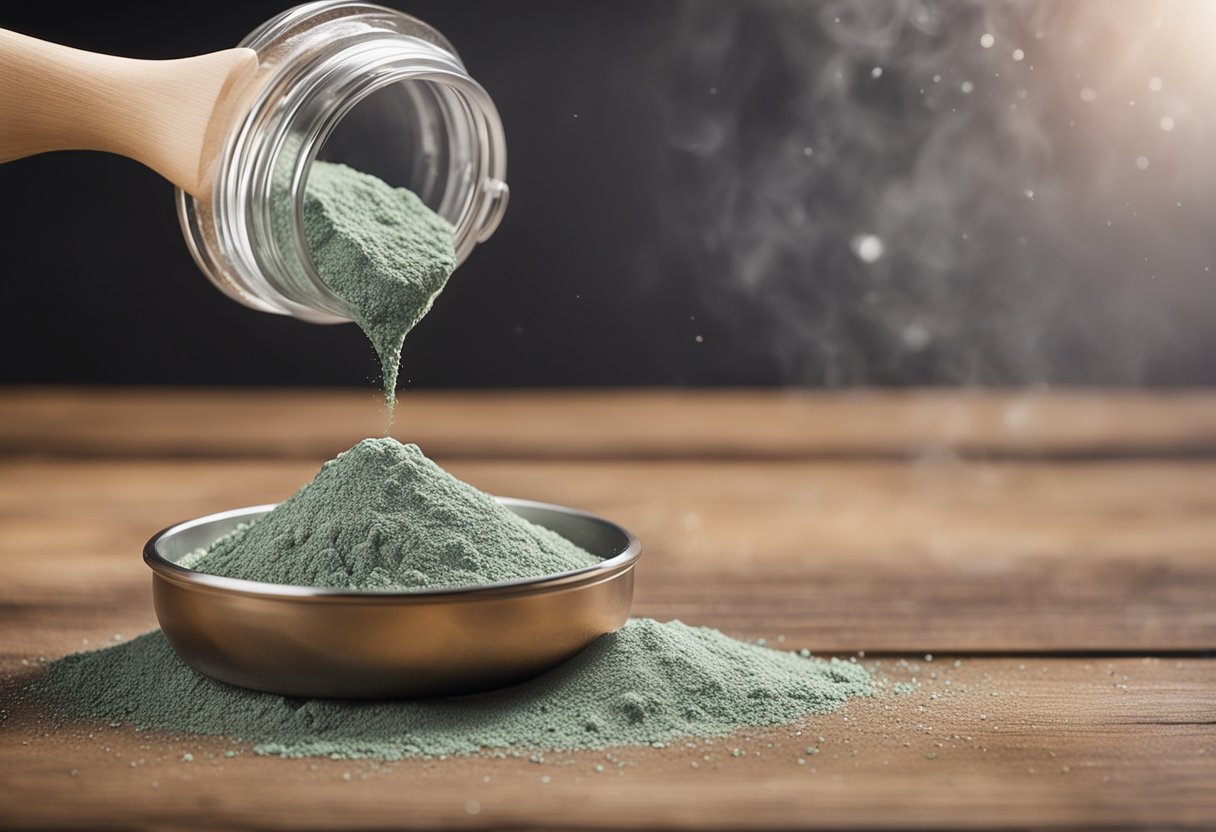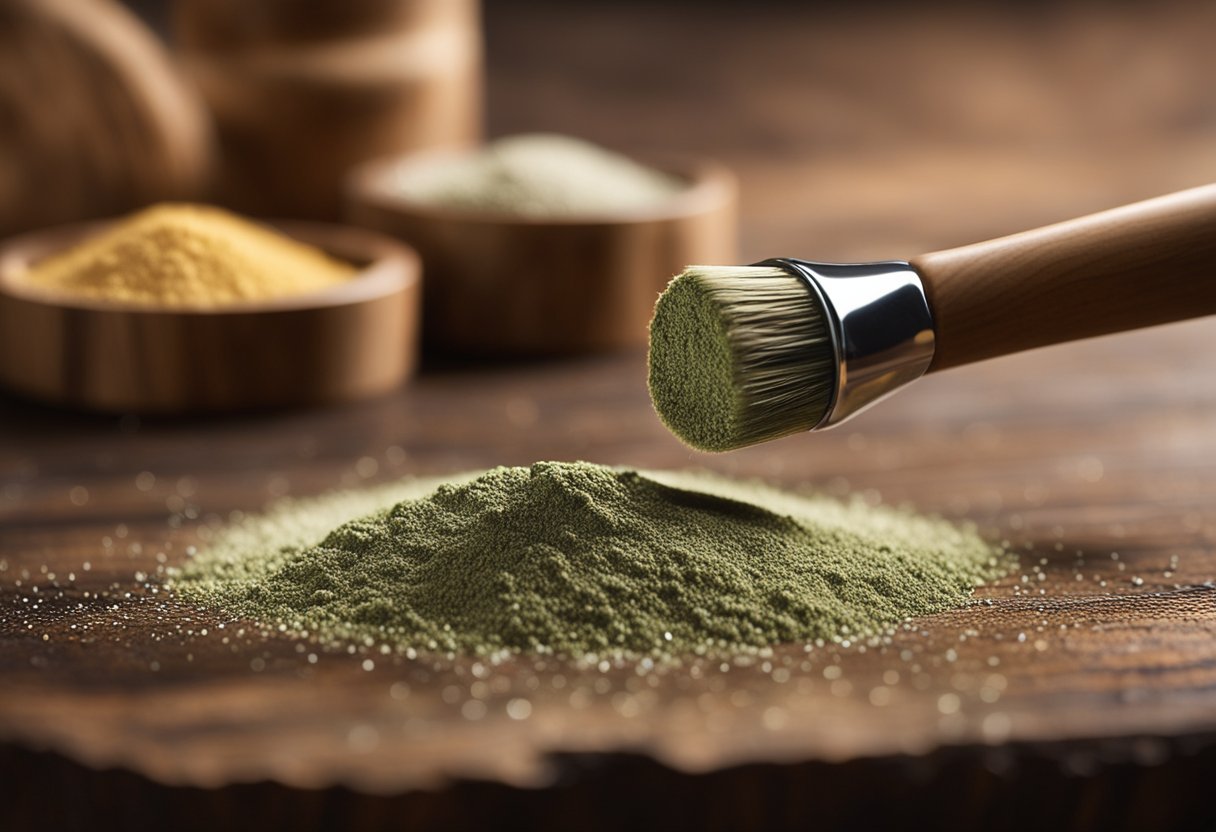Using mica powder on wood is a great way to add a unique touch to your DIY projects. Mica powder is a fine, shimmering powder that comes in a variety of colors and can be used to create stunning effects on wood surfaces. In this article, I will explain how to use mica powder on wood and share some tips and tricks to help you achieve the best results.
Before we get started, it’s important to understand what mica powder is and how to use it safely. Mica powder is a natural mineral that is ground into a fine powder and used in a variety of crafts, including soap making, cosmetics, and woodworking. When using mica powder on wood, it’s important to wear protective gear such as gloves and a mask to avoid inhaling the fine particles. It’s also important to choose a high-quality mica powder that is safe for use on wood surfaces.
Understanding Mica Powder
https://www.youtube.com/watch?v=WIkvFj39Luc&embed=true
As someone who has worked with mica powder on wood, I can tell you that it is a versatile and beautiful material that can add a unique shimmer and shine to your wood projects. But before we dive into how to use mica powder on wood, let’s take a closer look at what mica powder actually is.
Mica powder is a fine, loose powder made from mica, a mineral that occurs naturally in the earth’s crust. Mica is mined from deposits around the world, and then ground into a fine powder in a lab. The resulting powder is often used in cosmetics, art projects, and even in some types of food.
There are two main types of mica powder: natural and synthetic. Natural mica powder is made from ground-up pieces of natural mica, while synthetic mica powder is made in a lab using chemical processes. Both types of mica powder can be used on wood, but some people prefer natural mica powder because it is considered to be more environmentally friendly.
Mica powder comes in a wide range of colors, from earthy browns and greens to bright pinks and purples. Some mica powders even have a metallic sheen, which can give your wood projects a unique and eye-catching look. Metallic mica powders are especially popular for adding a metallic effect to wood projects.
When applied to wood, mica powder creates a shimmery, glittery, or metallic look, depending on the type of mica powder you use. The powder is made up of tiny, shiny flakes that reflect light and create a shiny, shimmery effect on the surface of the wood. The result is a beautiful, eye-catching finish that can be used on a variety of wood projects.
Safety Precautions
When using mica powder on wood, it is important to take certain safety precautions to prevent any harm or irritation. Here are some safety tips to keep in mind:
Wear Gloves
Mica powder can be irritating to the skin, so it is important to wear gloves when handling it. This will prevent the powder from coming into direct contact with your skin and causing any irritation.
Wear a Face Mask
When working with mica powder, it is important to wear a face mask to prevent inhaling the powder. Inhaling the powder can cause respiratory irritation and other health problems. A simple face mask will suffice.
Work in a Well-Ventilated Area
Mica powder should be used in a well-ventilated area to prevent any respiratory irritation. If possible, work outside or in a well-ventilated room with open windows and doors.
Store Mica Powder Safely
Mica powder should be stored in a cool, dry place away from direct sunlight. It should be kept in its original container with a tight-fitting lid to prevent any spills or contamination.
By following these safety precautions, you can ensure that your experience with mica powder on wood is safe and enjoyable.
Preparation of Wood
Before applying mica powder on wood, it is essential to prepare the wood surface properly. This will help the mica powder adhere better and allow you to create a smoother finish. Here are the steps to prepare the wood surface:
-
Sand the Wood Surface: Use a medium to fine-grit sandpaper and gently sand the wood surface in one direction. This will help to remove any rough spots, splinters, or bumps on the surface. Make sure to wipe the surface with a damp cloth after sanding to remove any dust or debris.
-
Fill any Cracks or Holes: If there are any cracks or holes on the wood surface, fill them with wood filler. This will help to create a smooth surface for the mica powder to adhere to.
-
Apply a Sealant: Apply a sealant on the wood surface to protect it from moisture and other environmental factors. This will also help the mica powder to adhere better to the wood surface. Allow the sealant to dry completely before applying the mica powder.
By following these steps, you can ensure that the wood surface is properly prepared for the application of mica powder. This will help to create a smooth and even finish on the wood surface.
Application Process
https://www.youtube.com/watch?v=AHbqzZQ24u0&embed=true
Mixing Mica Powder
Before applying mica powder to wood, it is essential to mix it with a medium. Mixing mica powder with a medium will ensure that the powder adheres to the wood surface and creates a smooth finish. There are several mediums that you can mix with mica powder, including paint, wax, varnish, and resin.
Acrylic paint is an excellent medium to mix with mica powder as it is water-soluble and easy to work with. To mix mica powder with acrylic paint, add a small amount of rubbing alcohol to the powder to create a paste-like consistency. Then, add the paste to the paint and mix thoroughly.
Applying Mica Powder
Once the mica powder has been mixed with a medium, it is time to apply it to the wood surface. There are several ways to apply mica powder to wood, including using a brush, sponge, or even your fingers.
When applying mica powder, it is essential to work in small sections to ensure that the powder does not dry out before you have a chance to buff it. Start by applying a thin layer of mica powder to the wood surface and work it into the surface using a circular motion. Continue to apply more powder until you achieve the desired texture, depth, and dimension.
Sealing the Surface
After applying mica powder to the wood surface, it is crucial to seal it to protect it from wear and tear. There are several sealants that you can use to seal mica powder on wood, including polyurethane, shellac, lacquer, and decoupage glue.
To seal mica powder on wood, start by applying a thin layer of sealant to the surface. Allow the sealant to dry completely before applying a second coat. Once the second coat has dried, buff the surface using a tacky cloth to create a smooth and shiny finish.
In conclusion, using mica powder on wood can add texture, depth, and dimension to your woodworking projects. By mixing mica powder with a medium, applying it to the wood surface, and sealing it with a sealant, you can create a beautiful and unique finish that will last for years to come.
Mica Powder in Other Crafts
While mica powder is commonly used in woodworking, it is also a versatile material that can be used in a variety of other crafts. Here are some examples of how mica powder can be used in other crafting projects:
- Paper crafts: Mica powder can be added to paper pulp to create unique designs and textures. It can also be used to add shimmer and shine to handmade paper.
- Scrapbooking and cards: Mica powder can be used to add a touch of sparkle to scrapbook pages and handmade cards. Simply mix the powder with a small amount of water or adhesive and apply it to the desired area.
- Resin jewelry and projects: Mica powder can be mixed into resin to create unique jewelry pieces and other resin projects. It can be used to create a variety of effects, from subtle shimmer to bold metallic finishes.
- Polymer clay and ceramics: Mica powder can be mixed into polymer clay or ceramic glazes to add shimmer and shine to finished pieces.
- River tables: Mica powder can be added to epoxy resin to create stunning river tables with a shimmering effect.
- Jewelry making: Mica powder can be used to create unique jewelry pieces by mixing it with a small amount of water or adhesive and applying it to metal or other materials.
Overall, mica powder is a versatile material that can be used in a variety of crafting projects to add shimmer, shine, and unique design elements.
Mica Powder in Cosmetics and Soaps
As a makeup artist and soap maker, I have found that mica powder is a versatile and beautiful ingredient to add to my creations. Mica powder is a mineral-based powder that is used to add color and shimmer to cosmetics and soaps. It is available in a wide range of colors and can be used in a variety of ways.
Mica powder is often used in cosmetics to add shimmer and sparkle to eyeshadows, lipsticks, and other makeup products. It can also be used to create custom shades by mixing different colors together. When using mica powder in cosmetics, it is important to use a cosmetic-grade mica powder that is safe for use on the skin.
In soap making, mica powder can be used to add color and texture to homemade soaps. It is often added to the soap base along with essential oils, shea butter, and other ingredients. Mica powder can also be used to create designs and patterns in melt and pour soap.
When using mica powder in soap making, it is important to choose the right type of mica powder for the soap base being used. Some mica powders are not suitable for use in certain types of soap bases, such as cold process soap. It is also important to use the correct amount of mica powder to achieve the desired color and effect.
Overall, mica powder is a versatile and beautiful ingredient that can be used in a variety of cosmetics and soaps. When used correctly, it can add color, texture, and shimmer to any creation.
Choosing the Right Mica Powder
As someone who has worked with mica powder on wood for years, I know that choosing the right mica powder is crucial in achieving the desired effect. Mica powders are available in a wide range of colors, and it’s important to choose the right color that will complement the wood.
When choosing a mica powder, it’s important to consider the pigment’s composition. Some mica powders are made from synthetic pigments, while others are made from natural pigments. If you’re looking for a natural look, then natural pigments are the way to go. On the other hand, if you’re looking for brighter and more vibrant colors, then synthetic pigments are the way to go.
In addition to the pigment’s composition, you should also consider the type of mica powder you want to use. Some mica powders are made from bronze or aluminum, while others are translucent. Eye Candy Pigments are a popular choice for those who want to add a touch of sparkle to their wood projects.
It’s also important to consider the application method when choosing a mica powder. If you’re planning to mix the mica powder with paint or a sealant, then you should choose a powder that is compatible with the medium. Some mica powders are specifically designed for use in soapmaking, while others are meant for use in art supplies.
Finally, don’t be afraid to experiment with different mica powders. Adding additives to the mica powder can create different effects and textures, so don’t be afraid to mix and match until you find the perfect combination for your wood project.
In summary, choosing the right mica powder can make all the difference in achieving the desired effect on wood. Consider the pigment’s composition, type of mica powder, application method, and don’t be afraid to experiment until you find the perfect combination.
Frequently Asked Questions
What are some common uses of mica powder?
Mica powder has a wide range of uses in various industries such as cosmetics, art, and even construction. It is commonly used as a colorant in cosmetics and personal care products such as soaps, lotions, and eyeshadows. In the art industry, mica powder is used to add shimmer and dimension to paintings, resin art, and even woodwork. In construction, mica powder is used as an additive to concrete to improve its strength and durability.
How can mica powder be used on wood?
Mica powder can be used on wood to add color, shimmer, and dimension to the surface. The first step is to prepare the wood surface by sanding it. This will help the mica powder adhere better and allow you to create a smoother finish. Use a medium to fine-grit sandpaper and gently sand in one direction. Next, apply the mica powder using a soft-bristled brush or a sponge. You can mix the mica powder with a clear coat or a sealant to make it more durable.
Can mica powder stain clothing or other materials?
Mica powder is a fine powder that can easily transfer to other surfaces. It is recommended to wear gloves and a face mask when handling mica powder to avoid inhaling it. Mica powder can stain clothing and other materials if it is not handled properly. It is best to work in a well-ventilated area and cover any nearby surfaces with a drop cloth or newspaper.
What is the best way to apply mica powder to wood?
The best way to apply mica powder to wood is to mix it with a clear coat or a sealant. This will make the mica powder more durable and prevent it from rubbing off. You can also apply the mica powder directly to the wood surface using a soft-bristled brush or a sponge. It is important to apply the mica powder evenly and in thin layers to avoid clumping and streaking.
Does mica powder need to be sealed after application?
Yes, mica powder should be sealed after application to prevent it from rubbing off and to make it more durable. You can mix the mica powder with a clear coat or a sealant to make it more durable. It is important to apply the sealant evenly and in thin layers to avoid clumping and streaking.
What types of surfaces does mica powder adhere to best?
Mica powder adheres best to porous surfaces such as wood, paper, and fabric. It can also be used on non-porous surfaces such as glass and metal, but it may require a sealant to make it more durable. It is important to prepare the surface before applying mica powder to ensure that it adheres properly.

Hi, I’m Sal Muller of Tooltrip.com. My DIY experience led me to understand essential power tools for home projects. Tooltrip.com guides enthusiasts and professionals in choosing right tools for any job. I provide concise top tool reviews for easier, efficient DIY.

